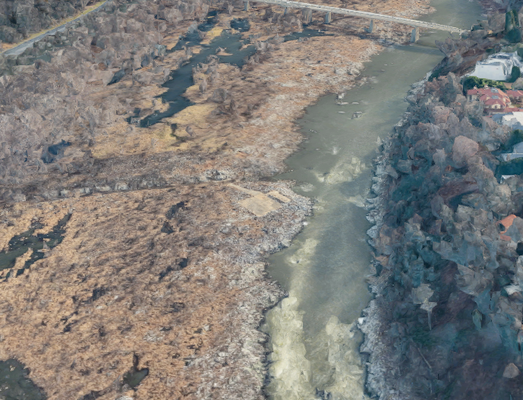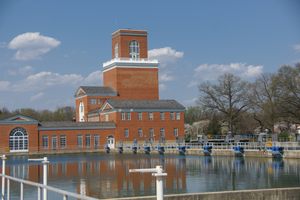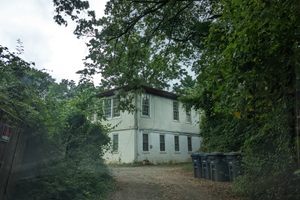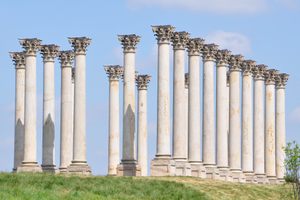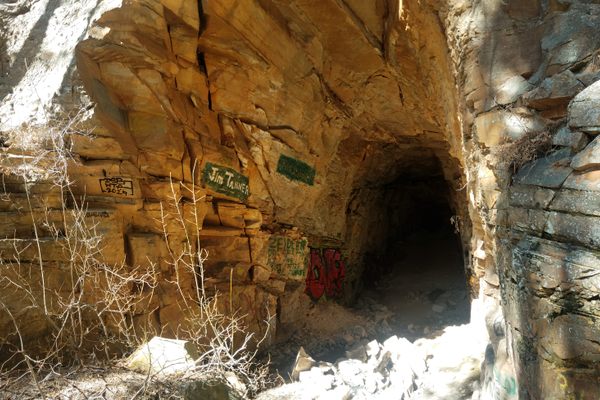About
In 1927, the Dalecarlia Water Treatment Plant opened in the leafy Palisades neighborhood above northwest Washington, D.C. The supervising Army Corps of Engineers were surprised to discover that their aqueduct worked a little too well and was delivering more water than they knew what to do with.
Rather than flush the excess inflow down the drain, the Engineers devised a method of harnessing it to generate electricity, which promised considerable savings on Dalecarlia’s utility bills. Surplus water was channeled downhill through 42-foot pipes and into a small hydroelectric plant. Once it went through the generators it flowed out into the Potomac over a 800-foot “tailrace” spillway.
Over the next four decades the power plant hummed away as planned, but year after year the population of Washington grew, demand increased, and the flow of water down the surplus spillway dropped from a gush to a trickle.
Events escalated to a crisis level on September 9, 1966 as Washington baked under a month-long, late-summer drought. According to Washington Aqueduct General Manager Tom Jacobus, that day, “No water flowed over the Little Falls Dam [intake valves] after the withdrawals upstream and once the Aqueduct’s needs were taken care of. That got people’s attention.” D.C. only had a few-day supply of reservoir water at the time, and if the drought went on much longer water restrictions would be required—a political nonstarter at the time.
Casting around for an emergency stopgap solution, the Engineers’ gaze fell once again on the now-empty hydroplant pipes. Perhaps it would be possible to reverse the thing, install a pump at the bottom and use it as a way to boost the Dalecarlia intake levels. The idea seemed perfect because the spillway connected to the Potomac far enough down river where the water was tidal and it never went dry.
The 1966 drought ended before construction on the new intake began, (“Blessed Rain,” the Washington Post sighed with relief) but construction proceeded because the project seemed like a prudent idea. The Army Corps of Engineers also proceeded with a longer term reservoir construction program across the city to boost emergency stockpiles.
Back at Dalecarlia, pipes were laid underneath the old spillway that extended the hydroplant’s connection to water’s edge. “A large chamber was blasted into the riverbed and a concrete [slab-like] structure was built around it,” explains Jacobus. In the event of an emergency, generators would be wheeled out onto the concrete pad to feed electricity to submersible pumps down below. Luckily, the long-term expansion of the reservoir system was completed before the Emergency Pumping Station was ever drafted into use, and the pumps were never turned on.
Its lifecycle as a water outlet and later as an inlet complete, the concrete deck now sits abandoned, slowly crumbling into Mother Potomac. According to Jacobus, "The pad there in the river is mainly used for fishing now, but the Army still owns it."
Related Tags
Know Before You Go
Proceed north on the C&O Canal towpath from Georgetown and lookout for the access road / spillway on your left about 600 feet before you hit the DC/MD boundary sign. Proceed with caution after heavy rains, the entire platform can become engulfed by the swollen river.
Published
June 23, 2017


